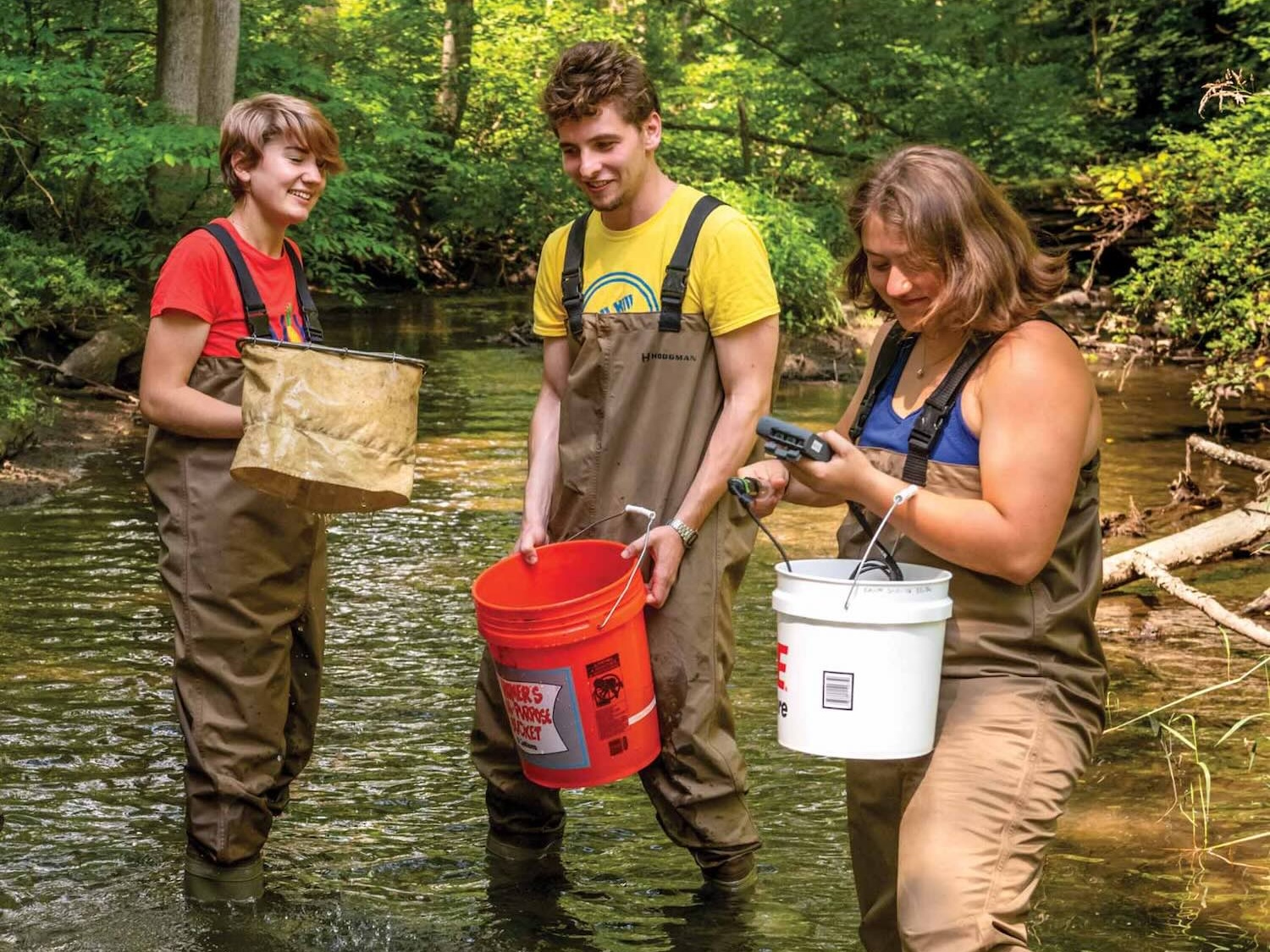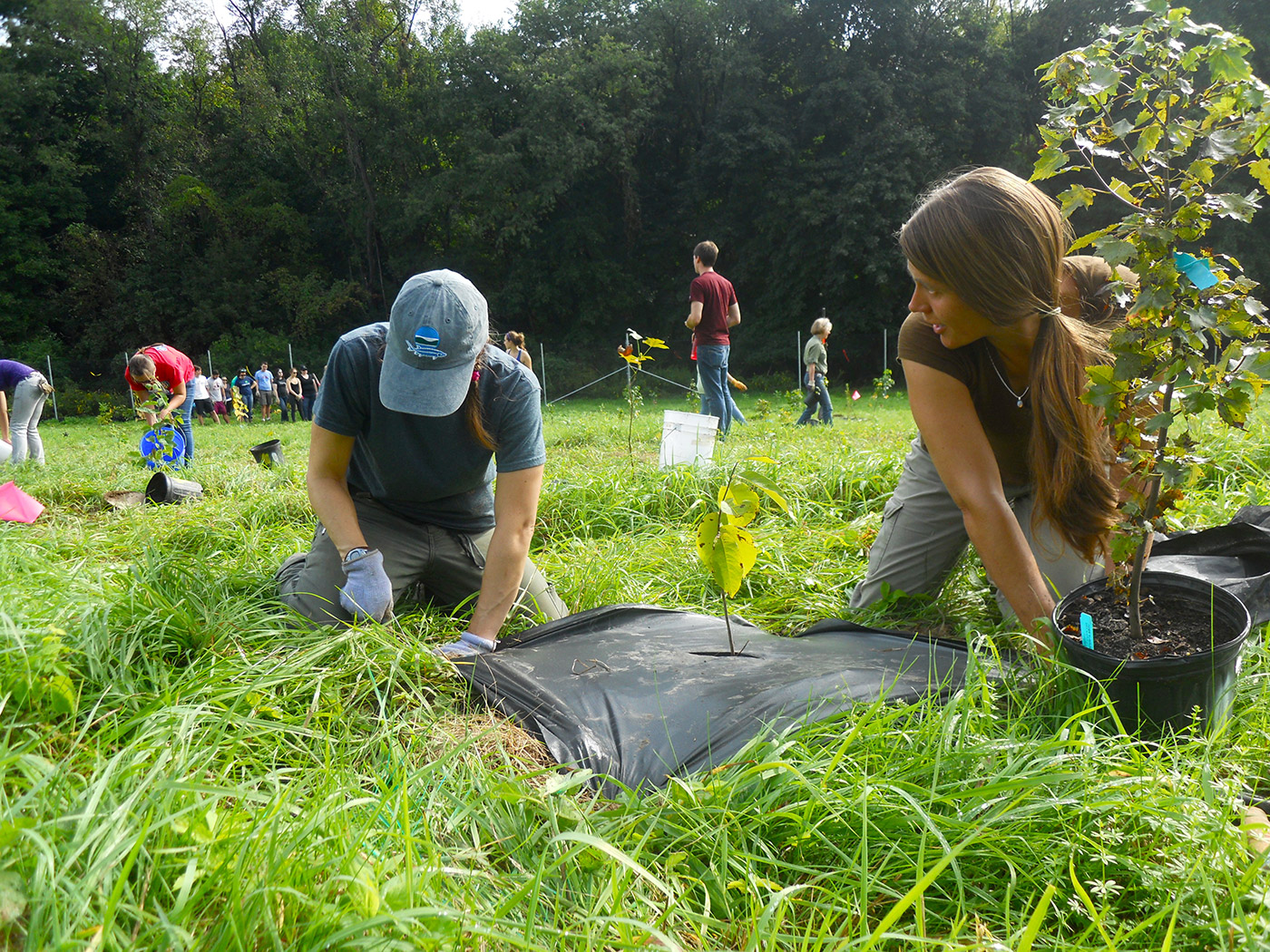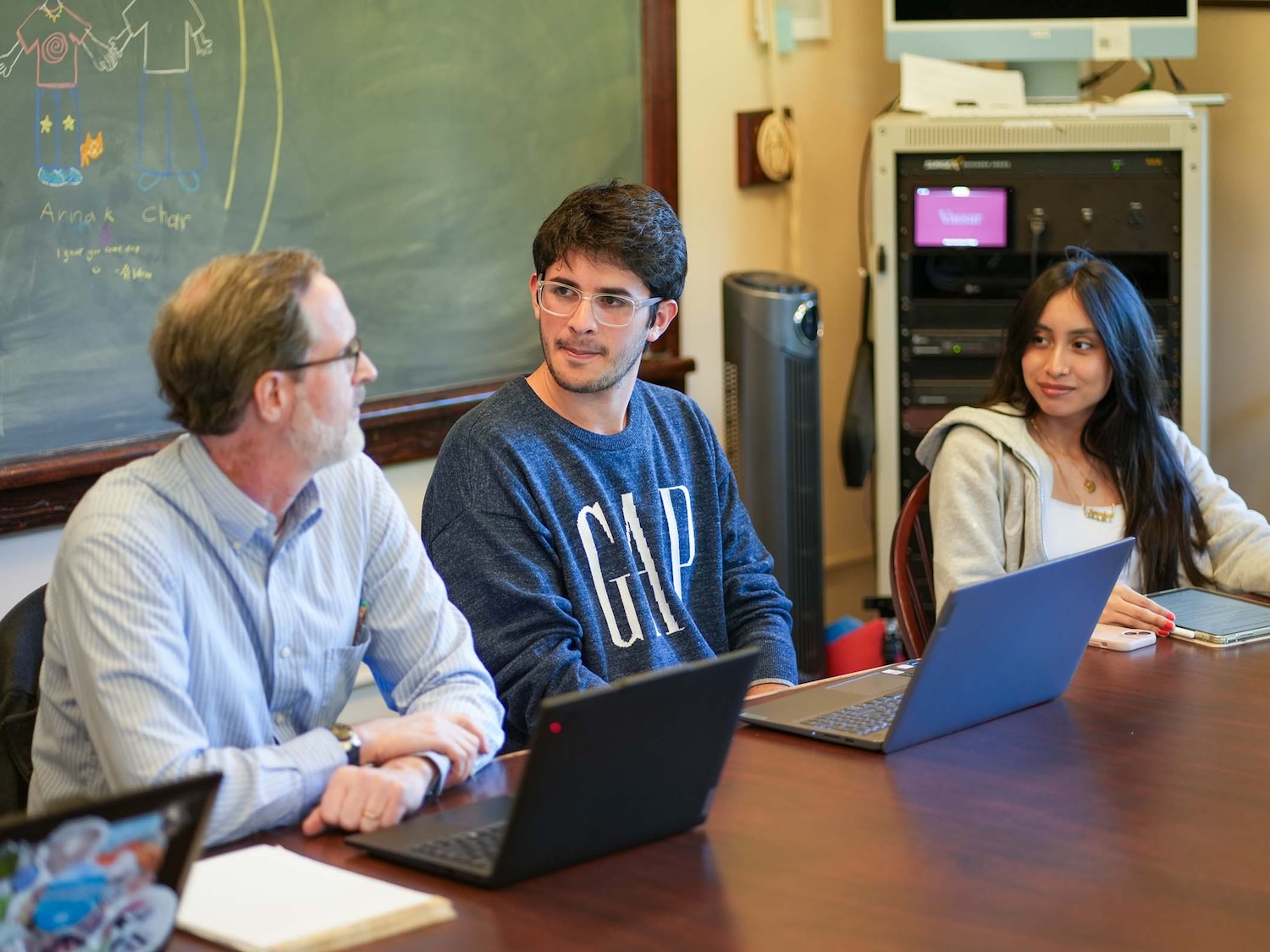Nature and Landscape
Healthy Landscapes and Thriving Ecosystems
Restoring and maintaining the health of the Earth with its diverse forms of life and ecosystems is critically important, both for its own sake and for the promotion of human flourishing. As we continue to confront the climate crisis, effectively managing human activities, landscapes, and ecosystems is necessary to increase resilience and sequester carbon.
Nature and landscape have been integral to Vassar’s culture, campus, and curriculum from the inception of the College. See on this page many of the ways in which we are working to promote thriving ecosystems and landscapes that support the well-being of humans and other life forms.
Arboretum
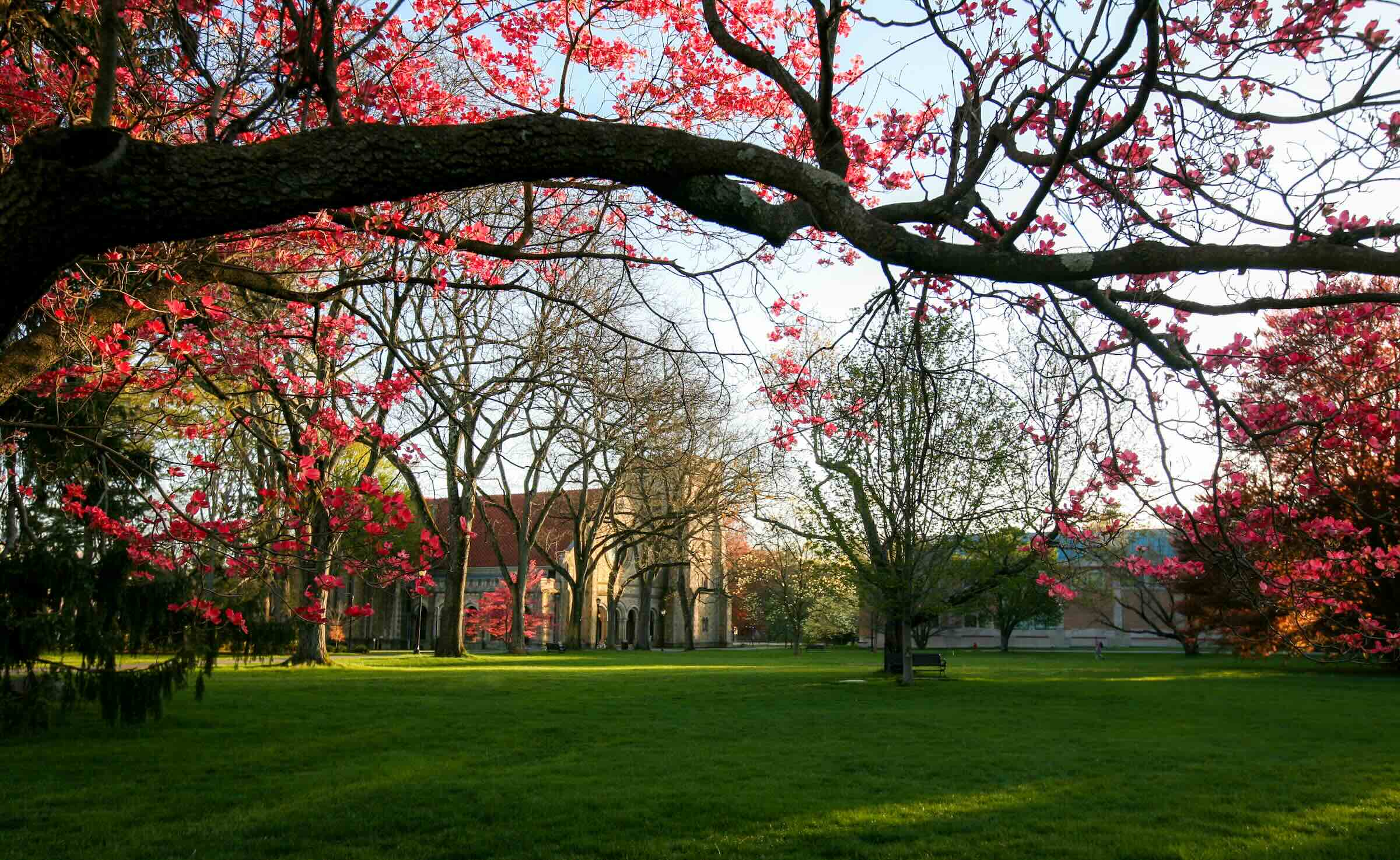
We love our trees! The arboretum was formally initiated in 1925 and is accredited as an ArbNet Level 2 Arboretum. There are over 2,200 trees on campus, with nearly 200 species. The Class Tree tradition is a marker of the large role that trees play in our community.
The Preserve at Vassar
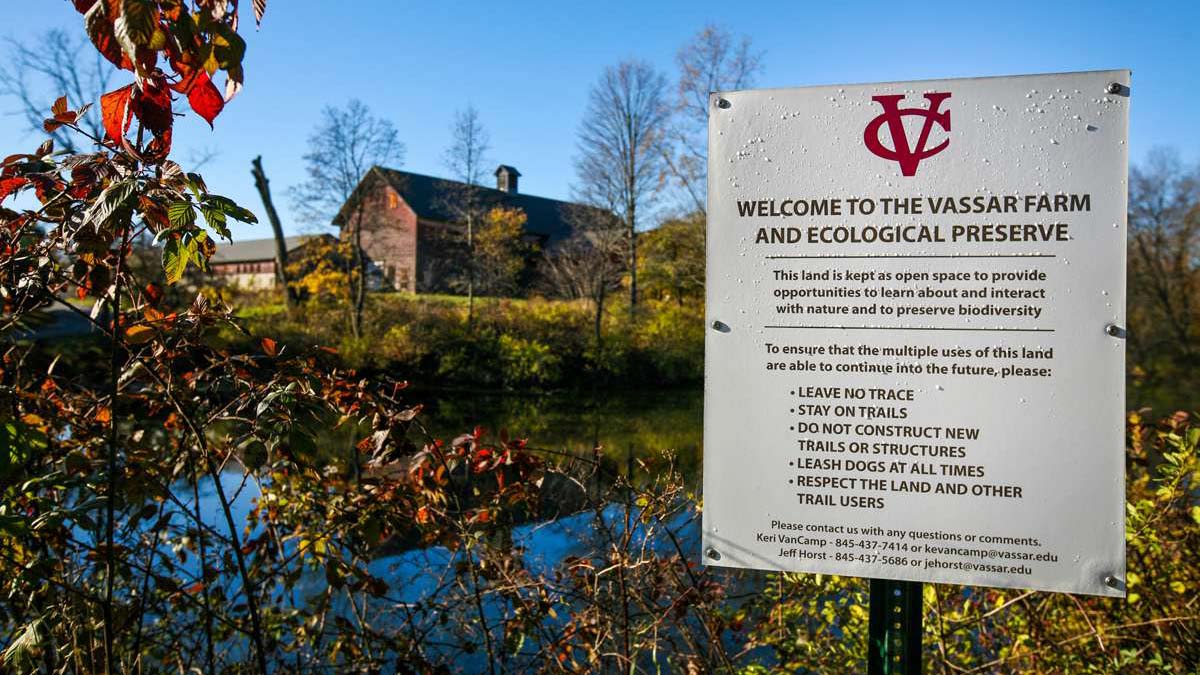
Right across the street from the main campus area, the Preserve is a much-loved place for research, observation, recreation, and relaxation. Actively managed to promote ecological health and educational opportunities, the Preserve has a 475 acre natural area and a field station.
The Environmental Cooperative
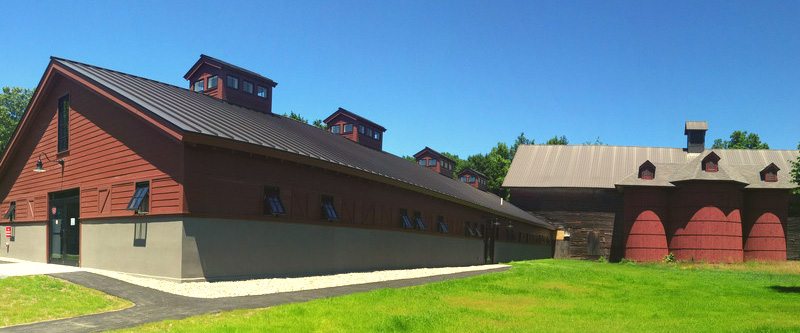
Located on the grounds of the Preserve at Vassar, the Environmental Cooperative is an outreach initiative that works to bring more people to the Preserve for structured education programs, while also facilitating Vassar student engagement in conservation efforts off-campus. Its programs inspire deeper engagement in the natural world while fostering a mindset of environmental stewardship.
Eco-Friendly Landscaping
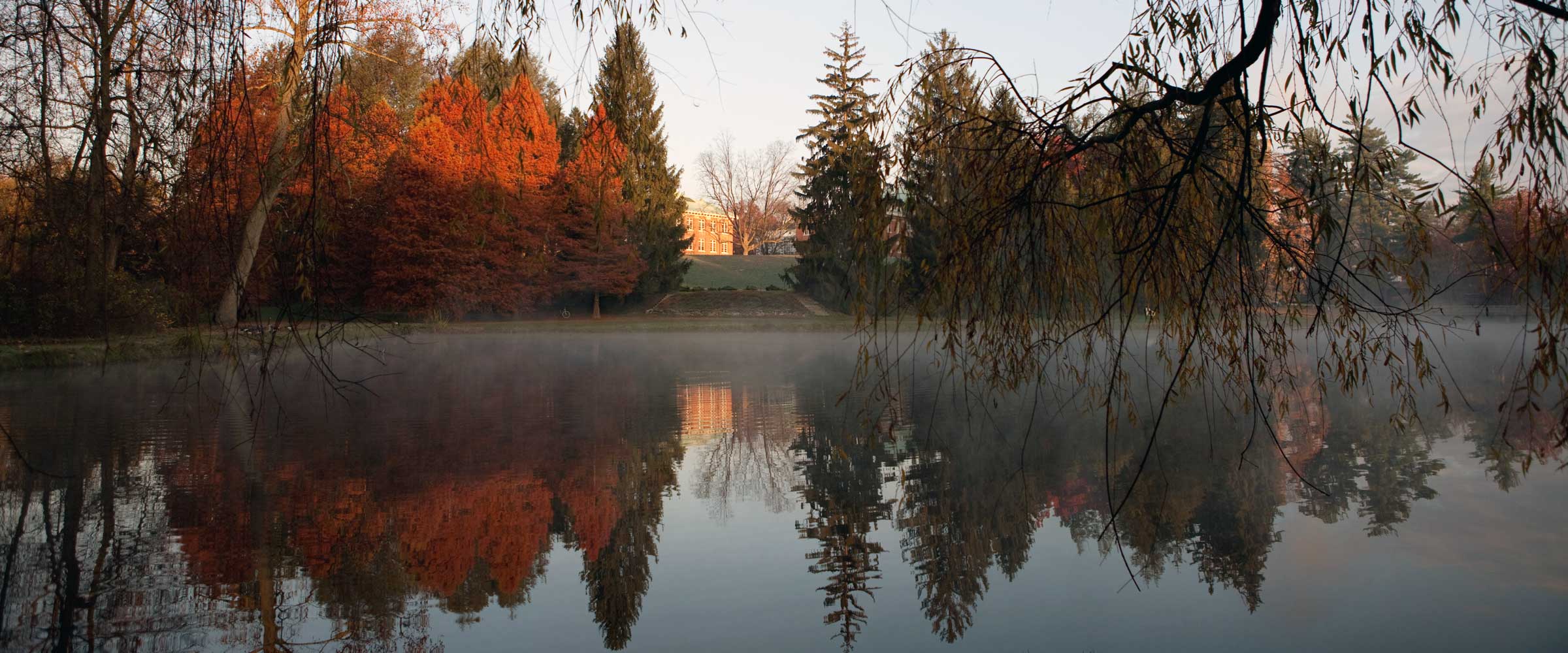
By limiting the use of chemical pesticides and herbicides, and by garden areas planted with native, pollinator-friendly plants, Vassar endeavors to practice environmentally-friendly landscape management. Instead of maintaining manicured Kentucky bluegrass style lawns, we let clover and other ground cover plants thrive, creating a more natural, safer, and enjoyable landscape. A variety of rain gardens and native plant areas contribute to the diversity of our beloved campus, including the rain gardens established alongside the Bridge for Laboratory Sciences, Wimpfheimer Nursery School, and Sunset Lake.
Vassar Nature Rx
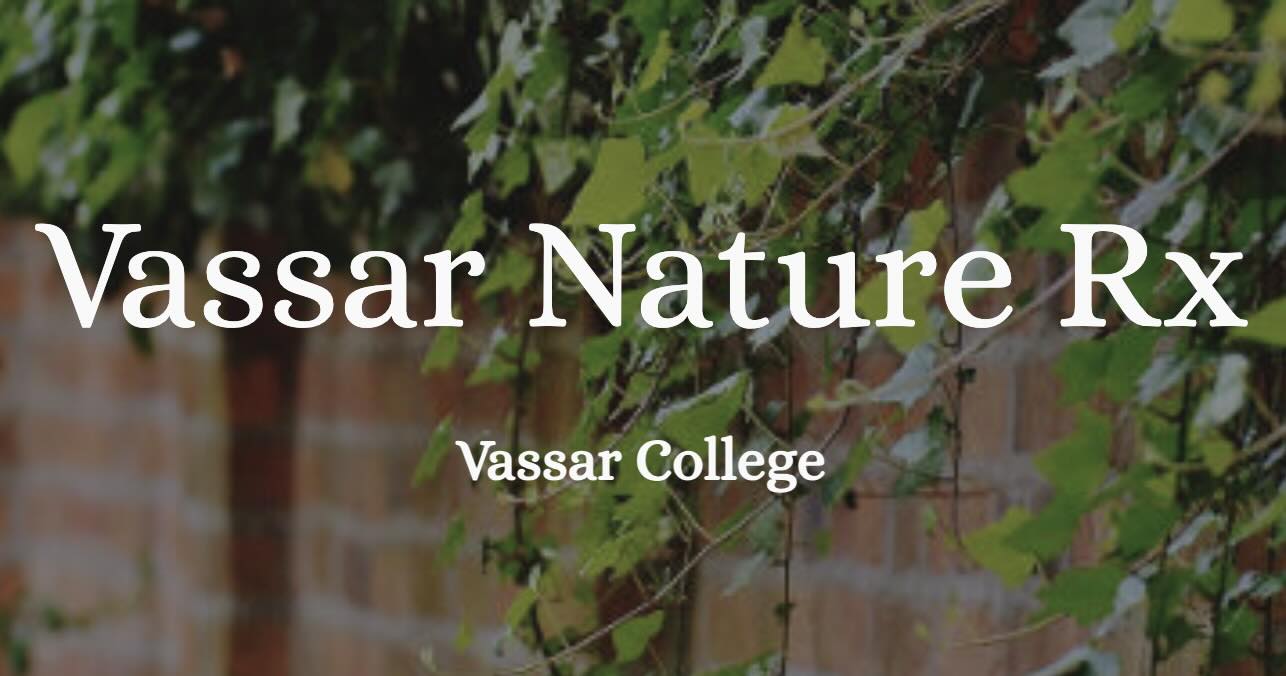
Vassar Nature Rx (VNRx) is a campus-wide initiative to foster the health and well-being of the Vassar community through engagement with nature. Convened by the Office of Sustainability and the Arboretum Committee, VNRx draws together partners from across the campus who engage nature and its healing powers in their work, research, and teaching.
Tree Campus USA
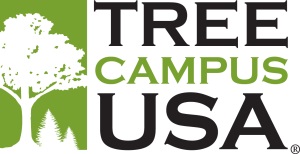
Vassar College has been a certified Tree Campus since 2012. As a Tree Campus, Vassar is dedicated to managing all campus trees, integrating the campus with the surrounding city to promote urban forests, and engaging students in campus and community forestry work. Learn more information about Tree Campus USA.
Bee Campus USA
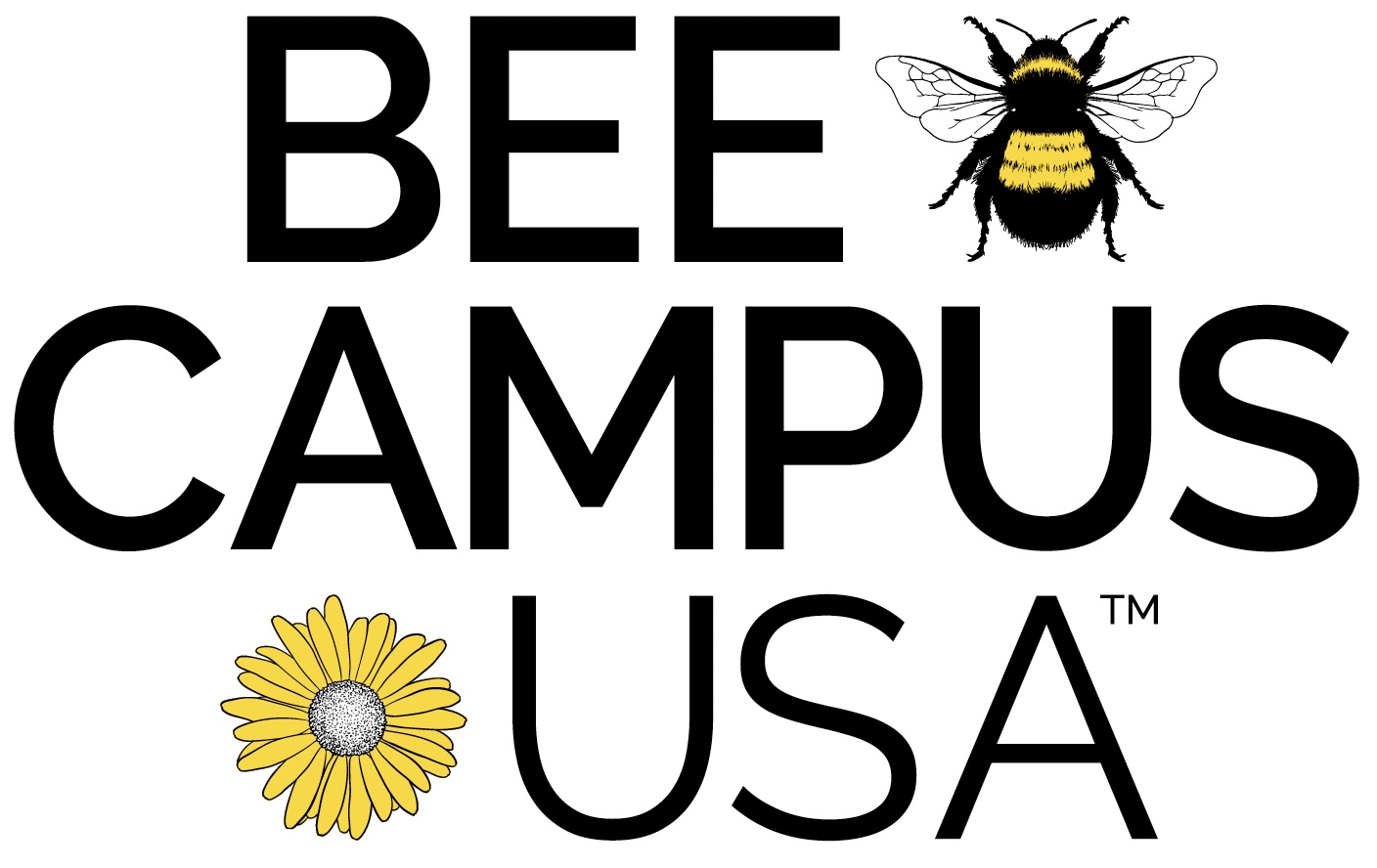
Vassar College Campus is a certified Bee Campus, committed to creating pollinator-friendly habitats. We have created resources about local native plants (PDF) to help educate the Vassar community and Poughkeepsie residents about beneficial plants for the area. Learn more about local native plant suppliers (PDF), and our integrated pest management plan (PDF).
